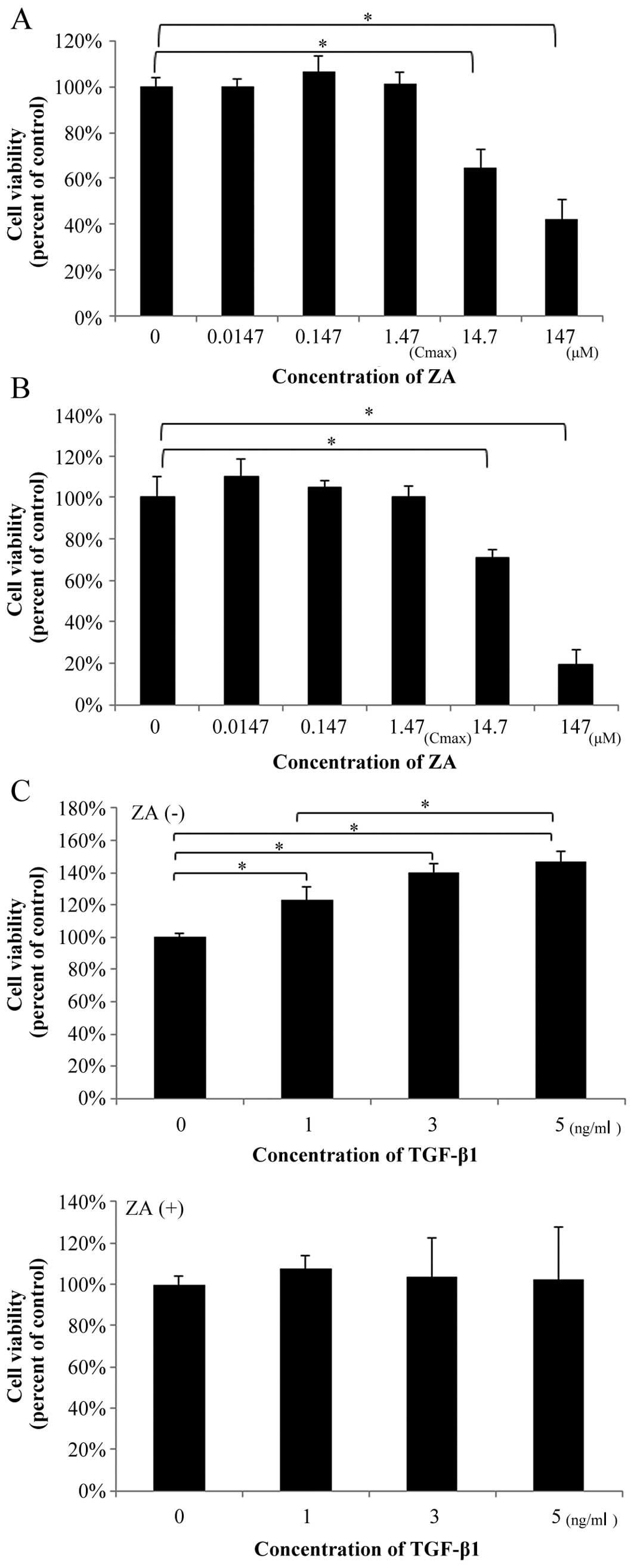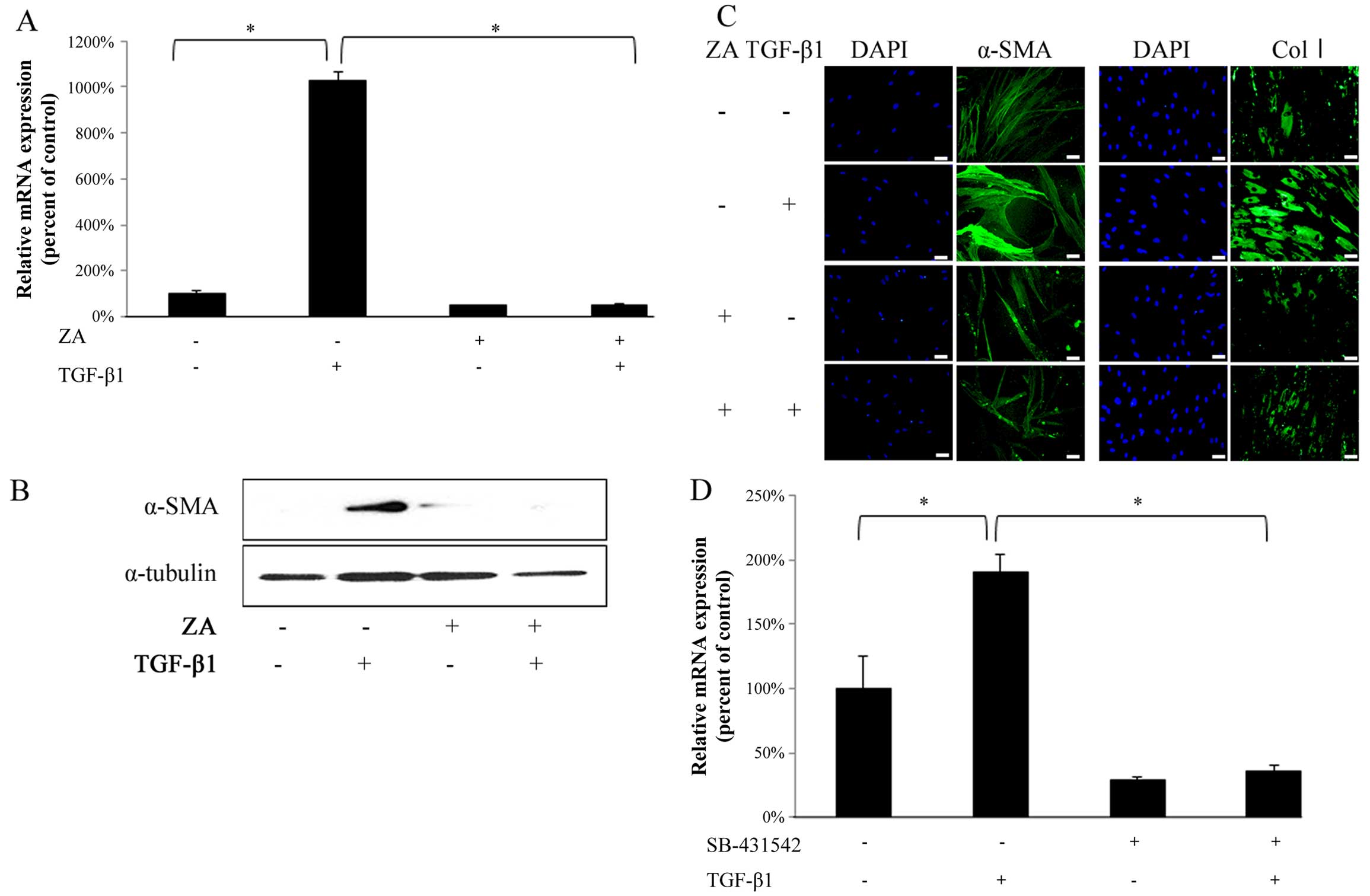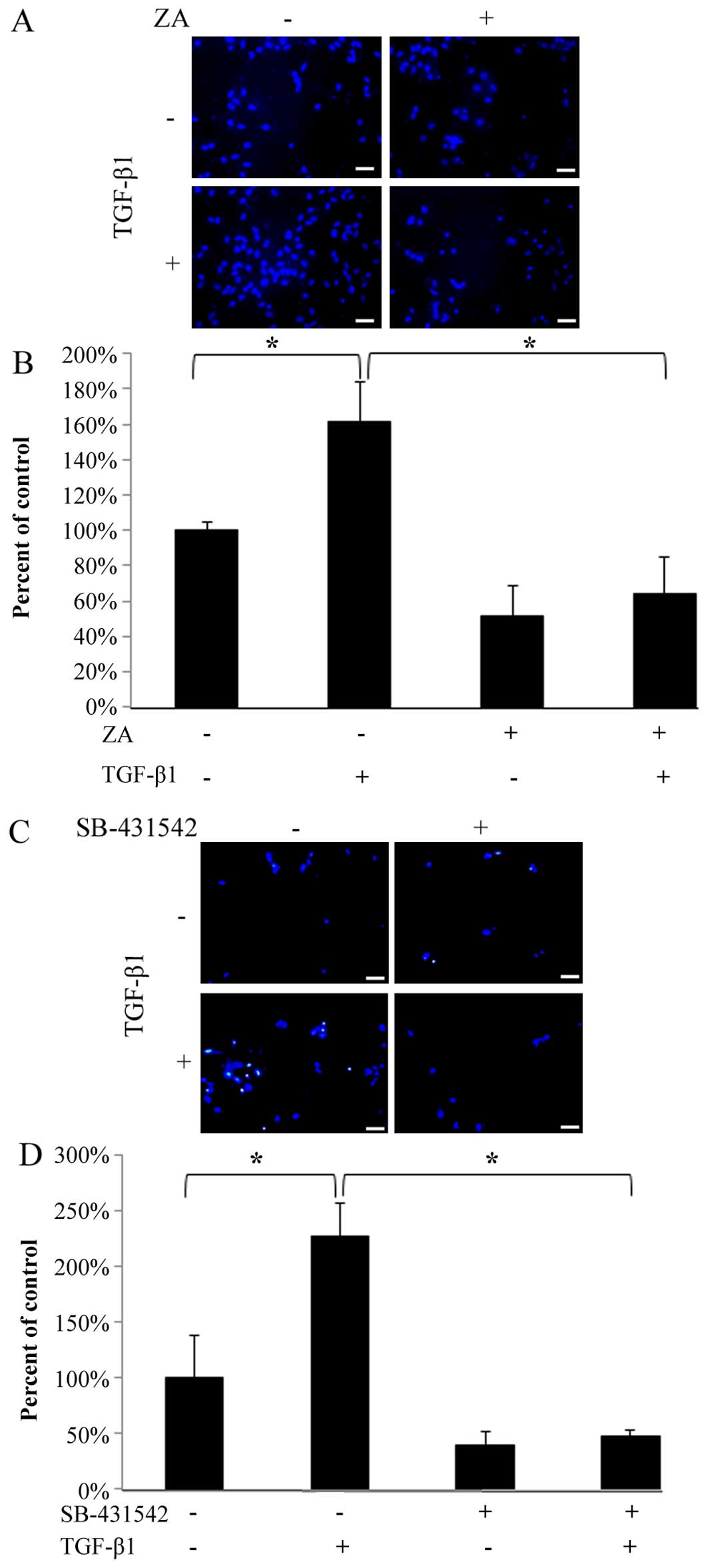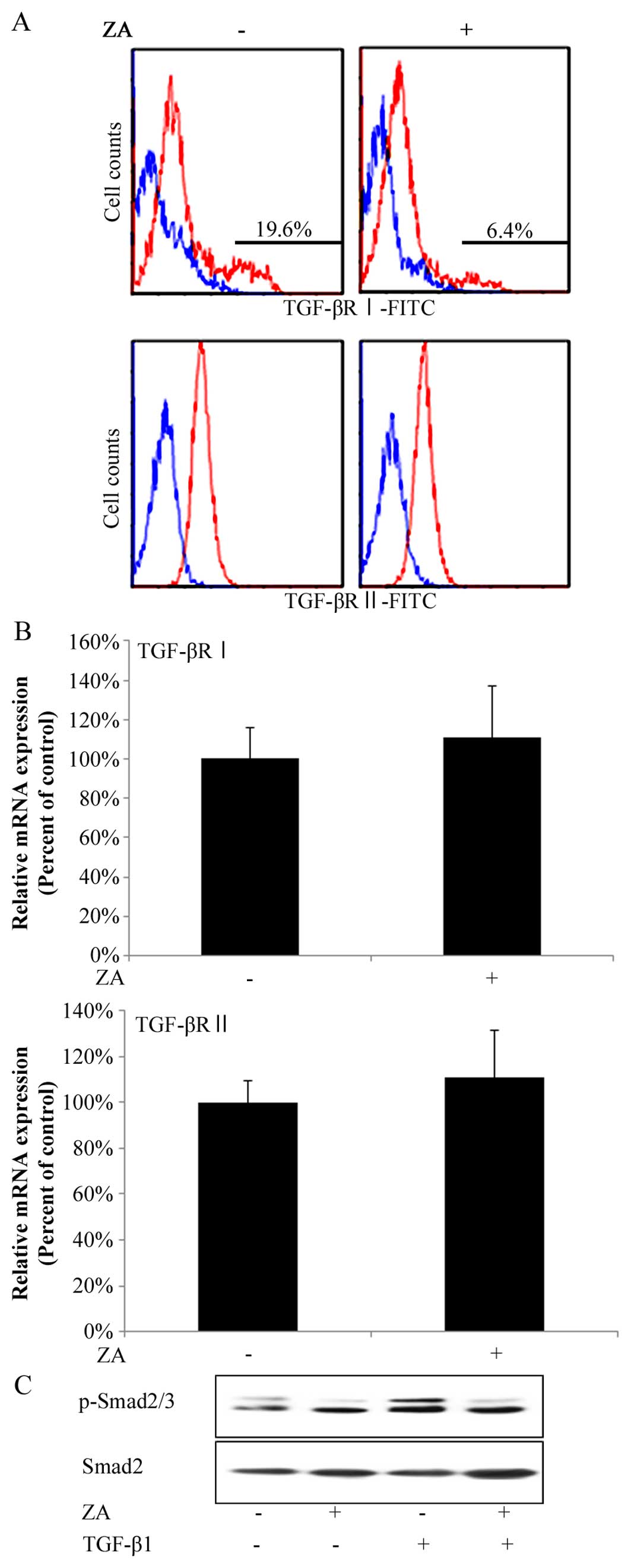|
1
|
Gong L, Altman RB and Klein TE:
Bisphosphonates pathway. Pharmacogenet Genomics. 21:50–53. 2011.
View Article : Google Scholar :
|
|
2
|
Boonyapakorn T, Schirmer I, Reichart PA,
Sturm I and Massenkeil G: Bisphosphonate-induced osteonecrosis of
the jaws: prospective study of 80 patients with multiple myeloma
and other malignancies. Oral Oncol. 44:857–869. 2008. View Article : Google Scholar : PubMed/NCBI
|
|
3
|
Fliefel R, Tröltzsch M, Kühnisch J,
Ehrenfeld M and Otto S: Treatment strategies and outcomes of
bisphosphonate-related osteonecrosis of the jaw (BRONJ) with
characterization of patients: a systematic review. Int J Oral
Maxillofac Surg. 44:568–585. 2015. View Article : Google Scholar : PubMed/NCBI
|
|
4
|
Manaka K, Makita N and Iiri T:
Erdheim-Chester disease and pituitary involvement: a unique case
and the literature. Endocr J. 61:185–194. 2014. View Article : Google Scholar
|
|
5
|
Rogers MJ, Crockett JC, Coxon FP and
Mönkkönen J: Biochemical and molecular mechanisms of action of
bisphosphonates. Bone. 49:34–41. 2011. View Article : Google Scholar
|
|
6
|
Vahtsevanos K, Kyrgidis A, Verrou E,
Katodritou E, Triaridis S, Andreadis CG, Boukovinas I, Koloutsos
GE, Teleioudis Z, Kitikidou K, et al: Longitudinal cohort study of
risk factors in cancer patients of bisphosphonate-related
osteonecrosis of the jaw. J Clin Oncol. 27:5356–5362. 2009.
View Article : Google Scholar : PubMed/NCBI
|
|
7
|
Marx RE, Sawatari Y, Fortin M and Broumand
V: Bisphosphonate-induced exposed bone
(osteonecrosis/osteopetrosis) of the jaws: risk factors,
recognition, prevention, and treatment. J Oral Maxillofac Surg.
63:1567–1575. 2005. View Article : Google Scholar : PubMed/NCBI
|
|
8
|
Ruggiero SL, Dodson TB, Assael LA,
Landesberg R, Marx RE and Mehrotra B; American Association of Oral
and Maxillofacial Surgeons: American Association of Oral and
Maxillofacial Surgeons position paper on bisphosphonate-related
osteonecrosis of the jaws. J Oral Maxillofac Surg. 67(Suppl 5):
2–12. 2009.PubMed/NCBI
|
|
9
|
Hansen T, Kunkel M, Weber A and James
Kirkpatrick C: Osteonecrosis of the jaws in patients treated with
bisphosphonates-histomorpholoic analysis in comparison with
infected osteoradionecrosis. J Oral Pathol Med. 35:155–160. 2006.
View Article : Google Scholar : PubMed/NCBI
|
|
10
|
Hoefert S, Wierich W, Eufinger H and
Krempien B: BP-associated vascular necrosis (AN) of the jaws:
histological findings. Bone. 38(suppl 1): 762006. View Article : Google Scholar
|
|
11
|
De Ceulaer J, Tacconelli E and
Vandecasteele SJ: Actinomyces osteomyelitis in
bisphosphonate-related osteonecrosis of the jaw (BRONJ): the
missing link? Eur J Clin Microbiol Infect Dis. 33:1873–1880. 2014.
View Article : Google Scholar : PubMed/NCBI
|
|
12
|
Kobayashi Y, Hiraga T, Ueda A, Wang L,
Matsumoto-Nakano M, Hata K, Yatani H and Yoneda T: Zoledronic acid
delays wound healing of the tooth extraction socket, inhibits oral
epithelial cell migration, and promotes proliferation and adhesion
to hydroxyapatite of oral bacteria, without causing osteonecrosis
of the jaw, in mice. J Bone Miner Metab. 28:165–175. 2010.
View Article : Google Scholar
|
|
13
|
Berti-Couto SA, Vasconcelos AC, Iglesias
JE, Figueiredo MA, Salum FG and Cherubini K: Diabetes mellitus and
corticotherapy as risk factors for alendronate-related
osteonecrosis of the jaws: a study in Wistar rats. Head Neck.
36:84–93. 2014. View Article : Google Scholar
|
|
14
|
Molcho S, Peer A, Berg T, Futerman B and
Khamaisi M: Diabetes microvascular disease and the risk for
bisphosphonate-related osteonecrosis of the jaw: A single center
study. J Clin Endocrinol Metab. 98:E1807–E1812. 2013. View Article : Google Scholar : PubMed/NCBI
|
|
15
|
Nisi M, La Ferla F, Karapetsa D, Gennai S,
Miccoli M, Baggiani A, Graziani F and Gabriele M: Risk factors
influencing BRONJ staging in patients receiving intravenous
bisphosphonates: a multivariate analysis. Int J Oral Maxillofac
Surg. 44:586–591. 2015. View Article : Google Scholar : PubMed/NCBI
|
|
16
|
Valluru M, Staton CA, Reed MWR and Brown
NJ: Transforming growth factor-β and endoglin signaling orchestrate
wound healing. Front Physiol. 2:892011. View Article : Google Scholar
|
|
17
|
Tipton DA and Dabbous MK: Autocrine
transforming growth factor β stimulation of extracellular matrix
production by fibroblasts from fibrotic human gingiva. J
Periodontol. 69:609–619. 1998. View Article : Google Scholar : PubMed/NCBI
|
|
18
|
Cotrim P, Martelli-Junior H, Graner E,
Sauk JJ and Coletta RD: Cyclosporin A induces proliferation in
human gingival fibroblasts via induction of transforming growth
factor-beta1. J Periodontol. 74:1625–1633. 2003. View Article : Google Scholar : PubMed/NCBI
|
|
19
|
Wu MY and Hill CS: TGF-β superfamily
signaling in embryonic development and homeostasis. Dev Cell.
16:329–343. 2009. View Article : Google Scholar : PubMed/NCBI
|
|
20
|
Goumans MJ, Liu Z and ten Dijke P: TGF-β
signaling in vascular biology and dysfunction. Cell Res.
19:116–127. 2009. View Article : Google Scholar
|
|
21
|
Heldin CH, Landström M and Moustakas A:
Mechanism of TGF-β signaling to growth arrest, apoptosis, and
epithelial-mesenchymal transition. Curr Opin Cell Biol. 21:166–176.
2009. View Article : Google Scholar : PubMed/NCBI
|
|
22
|
Liu T and Feng XH: Regulation of TGF-β
signalling by protein phosphatases. Biochem J. 430:191–198. 2010.
View Article : Google Scholar : PubMed/NCBI
|
|
23
|
Meulmeester E and Ten Dijke P: The dynamic
roles of TGF-β in cancer. J Pathol. 223:205–218. 2011. View Article : Google Scholar
|
|
24
|
Song B, Estrada KD and Lyons KM: Smad
signaling in skeletal development and regeneration. Cytokine Growth
Factor Rev. 20:379–388. 2009. View Article : Google Scholar : PubMed/NCBI
|
|
25
|
Sandbo N and Dulin N: Actin cytoskeleton
in myofibroblast differentiation: ultrastructure defining form and
driving function. Transl Res. 158:181–196. 2011. View Article : Google Scholar : PubMed/NCBI
|
|
26
|
Kimura H, Okubo N, Chosa N, Kyakumoto S,
Kamo M, Miura H and Ishisaki A: EGF positively regulates the
proliferation and migration, and negatively regulates the
myofibroblast differentiation of periodontal ligament-derived
endothelial progenitor cells through MEK/ERK- and JNK-dependent
signals. Cell Physiol Biochem. 32:899–914. 2013. View Article : Google Scholar : PubMed/NCBI
|
|
27
|
Sobral LM, Montan PF, Zecchin KG,
Martelli-Junior H, Vargas PA, Graner E and Coletta RD: Smad7 blocks
transforming growth factor-β1-induced gingival
fibroblast-myofibroblast transition via inhibitory regulation of
Smad2 and connective tissue growth factor. J Periodontol.
82:642–651. 2011. View Article : Google Scholar
|
|
28
|
Motizuki M, Isogaya K, Miyake K, Ikushima
H, Kubota T, Miyazono K, Saitoh M and Miyazawa K: Oligodendrocyte
transcription factor 1 (Olig1) is a Smad cofactor involved in cell
motility induced by transforming growth factor-β. J Biol Chem.
288:18911–18922. 2013. View Article : Google Scholar : PubMed/NCBI
|
|
29
|
Nakano N, Maeyama K, Sakata N, Itoh F,
Akatsu R, Nakata M, Katsu Y, Ikeno S, Togawa Y, Vo Nguyen TT, et
al: C18 ORF1, a novel negative regulator of transforming growth
factor-β signaling. J Biol Chem. 289:12680–12692. 2014. View Article : Google Scholar : PubMed/NCBI
|
|
30
|
Xiao Y-Q, Liu K, Shen J-F, Xu G-T and Ye
W: SB-431542 inhibition of scar formation after filtration surgery
and its potential mechanism. Invest Ophthalmol Vis Sci.
50:1698–1706. 2009. View Article : Google Scholar
|
|
31
|
Bakin AV, Rinehart C, Tomlinson AK and
Arteaga CL: p38 mitogen-activated protein kinase is required for
TGFbeta-mediated fibroblastic transdifferentiation and cell
migration. J Cell Sci. 115:3193–3206. 2002.PubMed/NCBI
|
|
32
|
Sarrazy V, Billet F, Micallef L, Coulomb B
and Desmoulière A: Mechanisms of pathological scarring: role of
myofibroblasts and current developments. Wound Repair Regen.
19(Suppl 1): s10–s15. 2011. View Article : Google Scholar : PubMed/NCBI
|
|
33
|
Van De Water L, Varney S and Tomasek JJ:
Mechanoregulation of the myofibroblast in wound contraction,
scarring, and fibrosis: Opportunities for new therapeutic
intervention. Adv Wound Care (New Rochelle). 2:122–141. 2013.
View Article : Google Scholar
|
|
34
|
Hinz B: Formation and function of the
myofibroblast during tissue repair. J Invest Dermatol. 127:526–537.
2007. View Article : Google Scholar : PubMed/NCBI
|
|
35
|
Yoshinami T, Yagi T, Sakai D, Sugimoto N
and Imamura F: A case of acquired Fanconi syndrome induced by
zoledronic acid. Intern Med. 50:1075–1079. 2011. View Article : Google Scholar : PubMed/NCBI
|
|
36
|
Kurishima K, Ohara G, Kagohashi K,
Takayashiki N, Tamura T, Shiozawa T, Miyazaki K, Kawaguchi M, Satoh
H and Hizawa N: Ossification and increased bone mineral density
with zoledronic acid in a patient with lung adenocarcinoma: a case
report. Exp Ther Med. 8:1267–1270. 2014.PubMed/NCBI
|
|
37
|
DeMaio L, Buckley ST, Krishnaveni MS,
Flodby P, Dubourd M, Banfalvi A, Xing Y, Ehrhardt C, Minoo P, Zhou
B, et al: Ligand-independent transforming growth factor-β type I
receptor signalling mediates type I collagen-induced
epithelial-mesenchymal transition. J Pathol. 226:633–644. 2012.
View Article : Google Scholar
|
|
38
|
Xu X, Wan X, Geng J, Li F, Wang C and Dai
H: Kinase inhibitors fail to induce mesenchymal-epithelial
transition in fibroblasts from fibrotic lung tissue. Int J Mol Med.
32:430–438. 2013.PubMed/NCBI
|
|
39
|
Sawada S, Chosa N, Ishisaki A and Naruishi
K: Enhancement of gingival inflammation induced by synergism of
IL-1β and IL-6. Biomed Res. 34:31–40. 2013. View Article : Google Scholar : PubMed/NCBI
|
|
40
|
Wang X, Chu J, Wen CJ, Fu SB, Qian YL, Wo
Y, Wang C and Wang DR: Functional characterization of TRAP1-like
protein involved in modulating fibrotic processes mediated by
TGF-β/Smad signaling in hypertrophic scar fibroblasts. Exp Cell
Res. 332:202–211. 2015. View Article : Google Scholar : PubMed/NCBI
|
|
41
|
Lu Q: Transforming growth factor-beta1
protects against pulmonary artery endothelial cell apoptosis via
ALK5. Am J Physiol Lung Cell Mol Physiol. 295:L123–L133. 2008.
View Article : Google Scholar : PubMed/NCBI
|
|
42
|
Pan B, To LB, Farrugia AN, Findlay DM,
Green J, Gronthos S, Evdokiou A, Lynch K, Atkins GJ and Zannettino
AC: The nitrogen-containing bisphosphonate, zoledronic acid,
increases mineralisation of human bone-derived cells in vitro.
Bone. 34:112–123. 2004. View Article : Google Scholar : PubMed/NCBI
|
|
43
|
Koch FP, Merkel C, Al-Nawas B, Smeets R,
Ziebart T, Walter C and Wagner W: Zoledronate, ibandronate and
clodronate enhance osteoblast differentiation in a dose dependent
manner - a quantitative in vitro gene expression analysis of Dlx5,
Runx2, OCN, MSX1 and MSX2. J Craniomaxillofac Surg. 39:562–569.
2011. View Article : Google Scholar
|
|
44
|
Chen YJ, Chao KS, Yang YC, Hsu ML, Lin CP
and Chen YY: Zoledronic acid, an aminobisphosphonate, modulates
differentiation and maturation of human dendritic cells.
Immunopharmacol Immunotoxicol. 31:499–508. 2009. View Article : Google Scholar : PubMed/NCBI
|
|
45
|
Pabst AM, Ziebart T, Koch FP, Taylor KY,
Al-Nawas B and Walter C: The influence of bisphosphonates on
viability, migration, and apoptosis of human oral keratinocytes -
in vitro study. Clin Oral Investig. 16:87–93. 2012. View Article : Google Scholar
|
|
46
|
Tarnawski AS: Cellular and molecular
mechanisms of gastrointestinal ulcer healing. Dig Dis Sci. 50(Suppl
1): S24–S33. 2005. View Article : Google Scholar : PubMed/NCBI
|
|
47
|
Ozdamar B, Bose R, Barrios-Rodiles M, Wang
HR, Zhang Y and Wrana JL: Regulation of the polarity protein Par6
by TGFbeta receptors controls epithelial cell plasticity. Science.
307:1603–1609. 2005. View Article : Google Scholar : PubMed/NCBI
|
|
48
|
Tojkander S, Gateva G and Lappalainen P:
Actin stress fibers - assembly, dynamics and biological roles. J
Cell Sci. 125:1855–1864. 2012. View Article : Google Scholar : PubMed/NCBI
|
|
49
|
Saito T, Izumi K, Shiomi A, Uenoyama A,
Ohnuki H, Kato H, Terada M, Nozawa-Inoue K, Kawano Y, Takagi R and
Maeda T: Zoledronic acid impairs re-epithelialization through
down-regulation of integrin αvβ6 and transforming growth factor
beta signalling in a three-dimensional in vitro wound healing
model. Int J Oral Maxillofac Surg. 43:373–380. 2014. View Article : Google Scholar
|
|
50
|
Okamoto S, Jiang Y, Kawamura K, Shingyoji
M, Tada Y, Sekine I, Takiguchi Y, Tatsumi K, Kobayashi H, Shimada
H, et al: Zoledronic acid induces apoptosis and S-phase arrest in
mesothelioma through inhibiting Rab family proteins and
topoisomerase II actions. Cell Death Dis. 5:e15172014. View Article : Google Scholar : PubMed/NCBI
|
|
51
|
Aloisi AL and Bucci C: Rab GTPases-cargo
direct interactions: fine modulators of intracellular trafficking.
Histol Histopathol. 28:839–849. 2013.PubMed/NCBI
|
|
52
|
Hu H, Milstein M, Bliss JM, Thai M,
Malhotra G, Huynh LC and Colicelli J: Integration of transforming
growth factor beta and RAS signaling silences a RAB5 guanine
nucleotide exchange factor and enhances growth factor-directed cell
migration. Mol Cell Biol. 28:1573–1583. 2008. View Article : Google Scholar
|
|
53
|
Kardassis D, Murphy C, Fotsis T, Moustakas
A and Stournaras C: Control of transforming growth factor β signal
transduction by small GTPases. FEBS J. 276:2947–2965. 2009.
View Article : Google Scholar : PubMed/NCBI
|
|
54
|
Short M, Nemenoff RA, Zawada WM, Stenmark
KR and Das M: Hypoxia induces differentiation of pulmonary artery
adventitial fibroblasts into myofibroblasts. Am J Physiol Cell
Physiol. 286:C416–C425. 2004. View Article : Google Scholar
|













